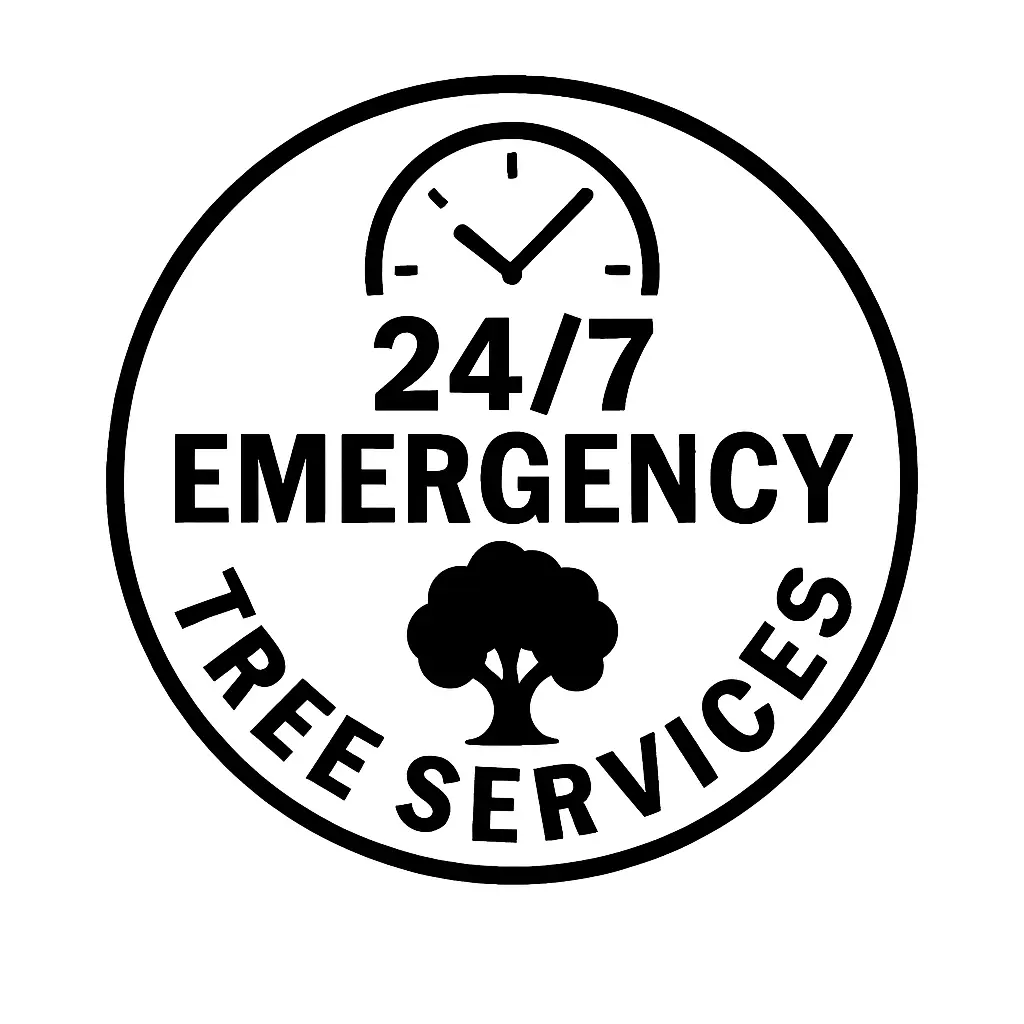Addressing a leaning tree often requires professional help, especially for mature trees. Minor adjustments might be possible for young trees, but it’s usually safest to consult a tree service for a thorough assessment and solution. Here’s a step-by-step guide:
- Assess the Situation & Prioritize Safety
- Safety First: Keep people and pets away from the leaning tree. A leaning tree poses risks of falling branches or collapse.
- Seek Professional Assistance: Avoid DIY fixes for mature trees. Contact a reputable tree service for an assessment; tree work is hazardous and requires experience.
- Evaluate the Tree and Determine the Cause
- Tree Species: Some species are more prone to leaning; understanding the type of tree can help assess risks.
- Degree of Lean: A slight lean may not be urgent, but a significant lean (15 degrees or more), particularly towards structures, requires immediate attention.
- Identify the Cause:
- Root Issues: Compromised roots from disease, construction, or erosion can destabilize the tree. Exposed or damaged roots are signs of root issues.
- Weather Damage: Strong winds or storms can push trees off balance, leading to a sudden lean.
- Improper Pruning: Unbalanced pruning may cause leaning by shifting the tree’s weight distribution.
- Soil Conditions: Excessive moisture or poor drainage can weaken the tree’s anchorage.
- Tree Health and Age: Older or diseased trees are naturally more susceptible to leaning.
- Explore Solutions
Based on the assessment, your tree service may recommend one or more of these solutions:
- For Young Trees:
- Staking: Secure small, leaning trees with stakes placed at a 45-degree angle away from the tree, avoiding the root zone. Secure the tree with wide straps to prevent bark damage, and monitor regularly. Stakes can be removed after about a year once the tree is stabilized.
- For Mature Trees:
- Heavy-Duty Staking: Professionals may use deep-placed stakes to stabilize larger trees without damaging roots.
- Cabling: Cabling can provide support by attaching cables to sturdy anchors or other trees, with padding to prevent trunk damage.
- Pruning: Strategic pruning can reduce weight on the leaning side to improve balance. This should be handled professionally, as incorrect pruning can worsen the issue.
- Trenching: In some cases, digging a trench around the root ball allows professionals to pull the tree upright. This advanced method is done slowly with special equipment and should only be attempted by trained experts.
- Long-term Care & Prevention
- Regular Monitoring: Schedule regular inspections with your tree service to ensure the solution remains effective and to catch new issues early.
- Soil Management: Proper drainage and soil care are essential to avoid future leaning. This might involve soil amendments, addressing compaction, or installing drainage systems.
- Proper Pruning Practices: Balanced pruning encourages stability and tree health. Avoid outdated practices like tree topping, which can severely damage the tree.
- When to Consider Tree Removal
- Safety Risks: If the tree poses significant risk to people or structures, removal may be necessary.
- Severe Damage or Decay: If the tree is beyond repair due to extensive damage or decay, removal is often the safest option.
- Unsuccessful Stabilization: If efforts to stabilize the tree fail, removal may be necessary to prevent future risks.
- Property Damage and Insurance
- Review Your Homeowner’s Insurance: Understand your policy’s coverage for tree-related damage, as it may cover removal if the tree causes damage to insured property.
- Document Damage: Take photos and contact your insurance company promptly.
- Get Repair Estimates: Obtain estimates from qualified professionals to support your claim.
- Choosing the Right Tree Service
When selecting a tree service, consider these tips:
- Research and Read Reviews: Look for local recommendations, online reviews, and referrals.
- Verify Insurance and Bonding: Ensure the company is fully insured and bonded for your protection.
- Request References: Speak with previous clients to verify the quality of their work.
- Compare Quotes: Get multiple quotes to compare services and pricing.
- Review Contracts Carefully: Check the contract for clear terms on scope of work, pricing, and timelines.
Key Takeaways
- Safety is the Top Priority: Avoid attempting to fix a leaning tree yourself unless you’re a trained professional.
- Professional Assessment is Crucial: A reputable tree service can assess the situation, determine the cause, and recommend appropriate solutions.
- Multiple Solutions: Pruning, cabling, or, in some cases, removal may be necessary depending on the tree’s condition and location.
- Ongoing Care: After addressing the lean, regular monitoring and care are essential to keep the tree healthy and stable.





